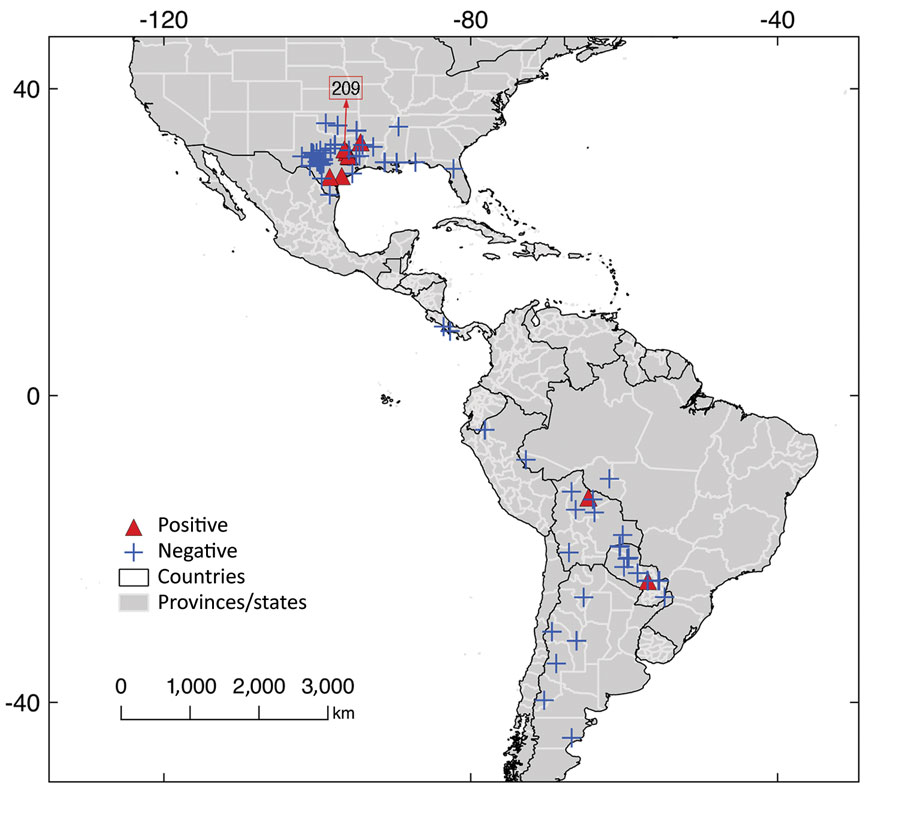Volume 29, Number 3—March 2023
Dispatch
Mycobacterium leprae in Armadillo Tissues from Museum Collections, United States
Figure 1

Figure 1. Geographic origin of samples analyzed in study of Mycobacterium leprae in armadillo tissue samples from US museums (n = 8 countries). We obtained coordinates from the tissue metadata or georeferenced them manually by using Google Earth (https://earth.google.com). Of the 2 samples suitable for whole-genome sequencing, 1, USA-am-109, lacked spatial detail from which to obtain coordinates and is not included on the map, along with 4 additional samples. The other sample that was sequenced, USA-am-209, is indicated with an arrow and the number in a red square.
Page created: January 12, 2023
Page updated: February 20, 2023
Page reviewed: February 20, 2023
The conclusions, findings, and opinions expressed by authors contributing to this journal do not necessarily reflect the official position of the U.S. Department of Health and Human Services, the Public Health Service, the Centers for Disease Control and Prevention, or the authors' affiliated institutions. Use of trade names is for identification only and does not imply endorsement by any of the groups named above.